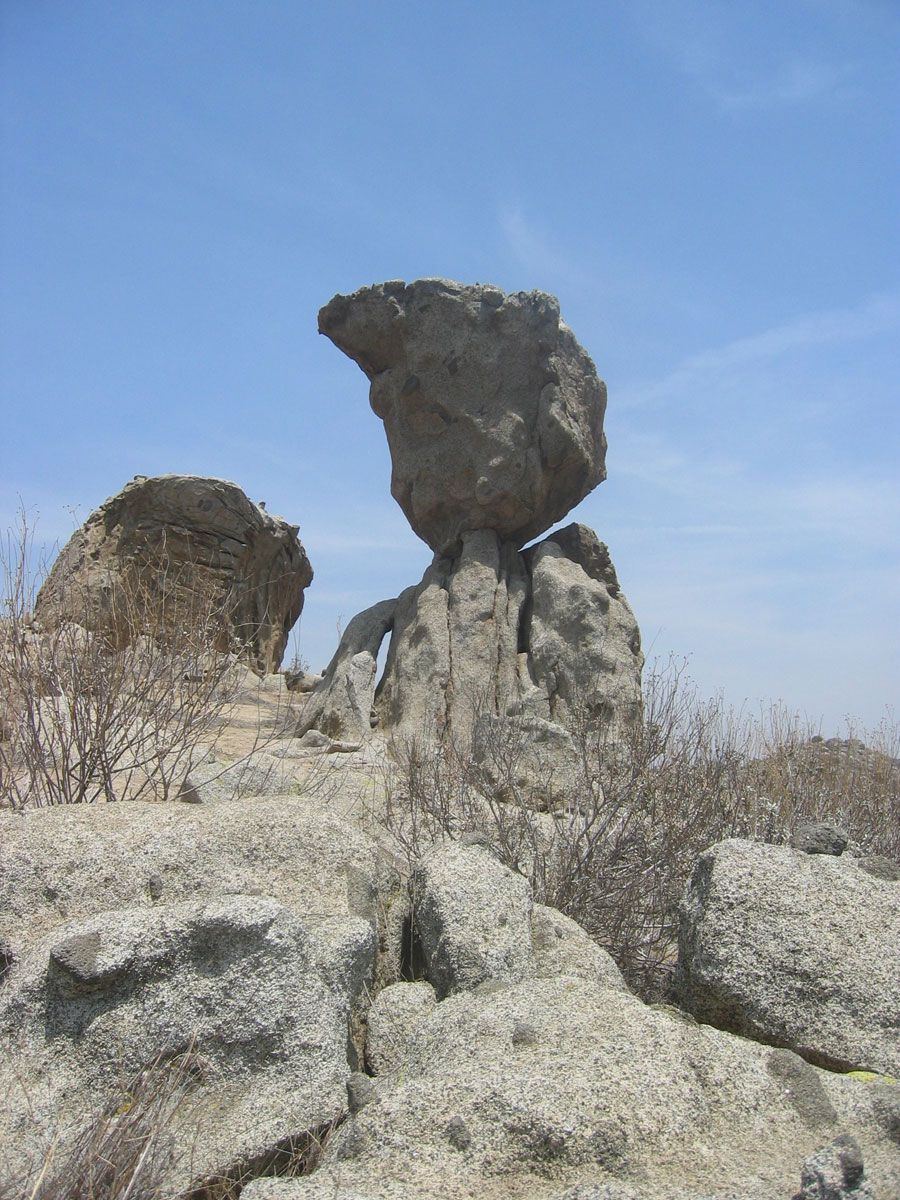
Mysterious Balancing Rocks Resist Quakes' Shakes

SAN DIEGO — In the western San Bernardino Mountains, near the highway that links Los Angeles and Las Vegas, scientists recently discovered a geological mystery: colossal rocks perched in precarious poses right next door to the San Andreas Fault.
It's not the rocks' balancing act that is perplexing, said Lisa Grant Ludwig, a scientist who presented this puzzle to colleagues this week here at the annual meeting of the Seismological Society of America. It's how the rocks have managed to stay that way with such an aggressive maker of powerful earthquakes just a few miles away.
Rocks with seemingly acrobatic balance are seen all over the world. Meteorological and geological forces wash away the material around them, leaving the giant rocks balanced like a top. There's even a term for them: Precariously Balanced Rocks, or PBRs for short, said Ludwig, an assistant professor at the University of California, Irvine.
"When you start to get into seismically active areas there are fewer and fewer," Ludwig told OurAmazingPlanet. "And you don't expect to see them right next to active faults —and you don't, generally." [Images: One-of-a-Kind Places on Earth]
Still standing
In fact, PBRs are used to verify earthquake hazard maps. "Quite some time ago it was recognized that wherever you see these things, it's an indication there haven't been a lot of really strong earthquakes because they haven't been shaken down," Ludwig said.
That's what makes the San Bernardino PBRs so very strange. There are two pockets of more than a dozen of the gracefully balancing rocks, and some are only 4 miles (7 kilometers) from the fault.
Sign up for the Live Science daily newsletter now
Get the world’s most fascinating discoveries delivered straight to your inbox.
Ludwig said that when a colleague brought her pictures of the rocks — and asked how they could possibly withstand the earthquakes that tear along the San Andreas Fault — she had to go see them for herself.
"I have spent most of my career documenting large earthquakes on the San Andreas Fault," Ludwig said. "I could rock some of [the PBRs] with my hand."
Seismic mystery
Subsequent dating research revealed that the rocks had been standing in their positions for millennia — in some cases as long as 18,000 years. "That's a long time for something that is so close to a big fault," Ludwig said.
It's not clear why violent shaking has apparently spared the two small pockets near the fault where the rocks still stand. "I think it shows an area of complexity in the fault rupture," Ludwig said, "and that is what a lot of my colleagues seem to agree on in the discussion."
She said it's something that researchers will be pursuing next. "We don't have a good explanation," she said.
This story was provided by OurAmazingPlanet, a sister site to LiveScience. Reach Andrea Mustain at amustain@techmedianetwork.com. Follow her on Twitter @AndreaMustain. Follow OurAmazingPlanet for the latest in Earth science and exploration news on Twitter @OAPlanet and on Facebook.
